If your child has ever yelled “I’m bored!” from the other side of the house, then you know how challenging it can be to find creative activities for kids.
It may also feel like you’ve tried everything, but nothing seems to work. You’ve bought games, downloaded apps, and even turned your living room into an arts and crafts studio.
But, no matter how hard you try to keep them occupied, one thing is always a challenge — their short attention span.
It can be easy to throw in the towel and opt for lots of screen time. However, you know how important it is for your child to play games that will help educate, entertain, and engage them, especially during early childhood. So, what can you do?
Our learning experts at HOMER have you covered!
We’ve compiled a list of fun learning activities for kids that you can try today. Most are quick and easy to put together. And the best part is that you can use the everyday items you already have around the house to help create many of the items below.
So, without further ado. Let’s get started!
7 Creative Activities For Kids To Do At Home
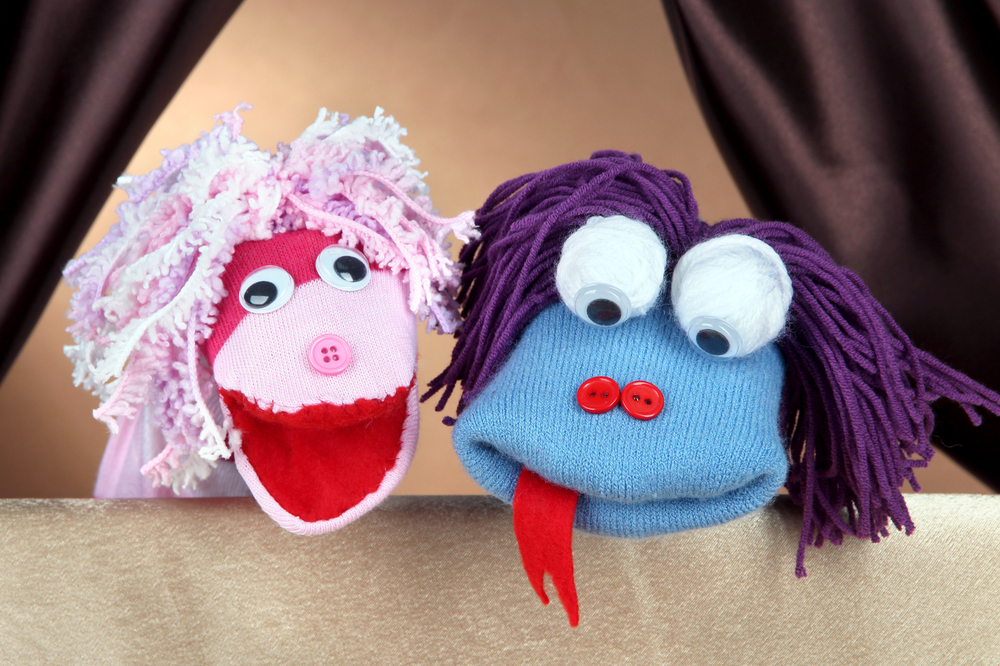
1) Puppet Creation And A Puppet Show
What You’ll Need:
- Tiny puppet theatre materials (empty cereal box, scissors, glue, scraps of fabric, paint to decorate)
- Puppet materials (to be explained below)
What To Do:
You’ll first need to help your child come up with a creative story for the puppet show. Remember to give them the freedom to choose the genre they want — from action to drama to fantasy.
There are no limitations, but coming up with unique stories can be challenging, so it’s OK if your child is inspired by their favorite fairytale or superhero story.
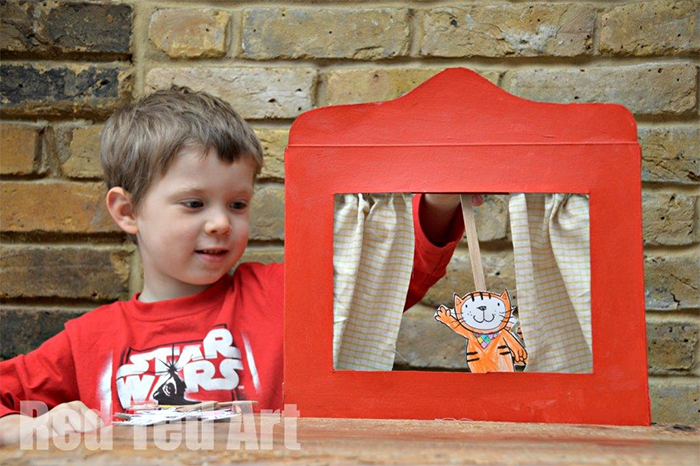
Once there’s a story, it’s time to create a tiny puppet theatre. Start by carefully taking your cereal box apart, and then cut a curvy theatre-top shape into the middle panel of the box. Next, cut out a big rectangle to form your stage.
You can then paint the inside of your box (which will become the outside). Once the paint is dry, put the box back together and use fabric to glue curtains onto your stage.
It’s now time to create the characters! There are lots of ways to make puppets. You can create them using socks, paper bags, tongue depressors, etc.
Choose whichever items are already around the house or ones that are easily accessible. And then use buttons, crayons, and markers to create physical features and help the puppets come to life.
Finally, it’s time to put everything together and give a fun puppet show!
This is a great activity to help your child learn about storytelling. Bonus: Making the theatre and puppets will also help build fine motor skills.
2) Butterfly Painting

What You’ll Need:
- Tongue depressors
- Paint
- Watercolor paper, acrylic paper, or card stock (something thick enough not to tear as it absorbs the paint)
- Glue
- Scissors
- Pipe cleaners
What To Do:
Start by drawing a butterfly’s wings on the paper and carefully cutting them out as one piece (not separately). Fold one wing over the other, right down the middle of the wings, and then unfold it. Next, encourage your child to paint one wing using any pattern or colors they want.
After painting one wing, help your child fold the paper together (where the existing fold is) and then slowly unfold it. This will reveal a butterfly-like shape of art. Allow it to dry.
Tip: Make sure there isn’t so much paint that it drips when the wings are folded together.
Once the wings are dry, glue a tongue depressor to the middle of the butterfly. After that, cut two short pieces of your pipe cleaners and curl the ends. Finally, glue or tape the pipe cleaners onto the tongue depressor to make antennas. Now you have a butterfly!
This activity helps children continue developing their fine motor skills while encouraging creativity — what interesting patterns can your child come up with?
3) Nature Walk Art

Creative activities for kids don’t always have to be indoors. Sometimes going outside to get some fresh air and vitamin D is all your child (and you!) needs to make the most of the day.
What You’ll Need:
- An outside area
- A box or bucket for collecting items
What To Do:
For this activity, go on a walk together around your neighborhood (if you have a large backyard, that works too!) and collect items. These can be fallen leaves, sticks, flowers, pebbles, and any interesting things you come across.
Once you’re back home, you can then glue these items onto cardboard and make fun artwork. This helps your child find the beauty in the simple, everyday parts of life.
4) Role-Playing
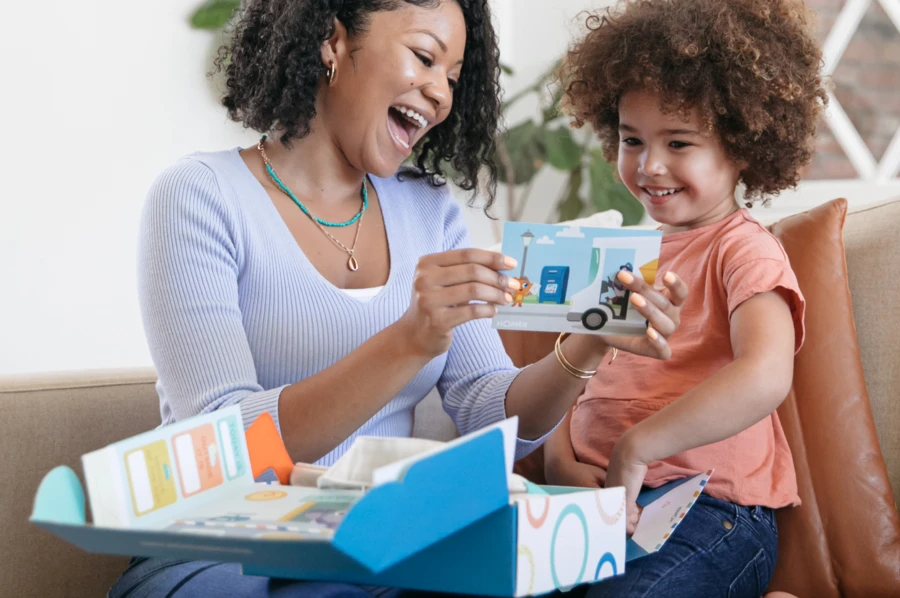
Role-playing is an excellent way for kids to have fun mimicking their mom, dad, teacher, doctor, or even favorite superhero.
One of our favorite role-playing activities for kids is Mail Adventure, where you can help your child recreate a post office.
What You’ll Need:
- The HOMER Mail Adventure Kit. Inside you will find envelopes, post office stickers, cards, and a cotton canvas bag.
What To Do:
Help your child set up a mini post office. With this activity, your child can write or receive letters and deliver them to different family members. There are many ways to bring snail mail back to life at home!
This fun and engaging activity will help your child continue developing their reading and writing skills while playing pretend.
5) Dance Party

What You’ll Need:
- Music
- An open space (inside or outside)
What To Do:
Just dance! After a busy week, sometimes the last thing you want to do is create an arts and crafts project at home that will leave the house a mess.
If you’re looking for fun and creative activities for kids that involve no mess, opt for a dance party!
We love this option because it gets the whole family involved. And to make things a little more exciting, you can explore music and dance moves from different cultures all over the world to expose your child to something new.
Everybody loves music, and this is a fun family activity to get your child up and moving.
6) Sidewalk-Chalk Obstacle Course
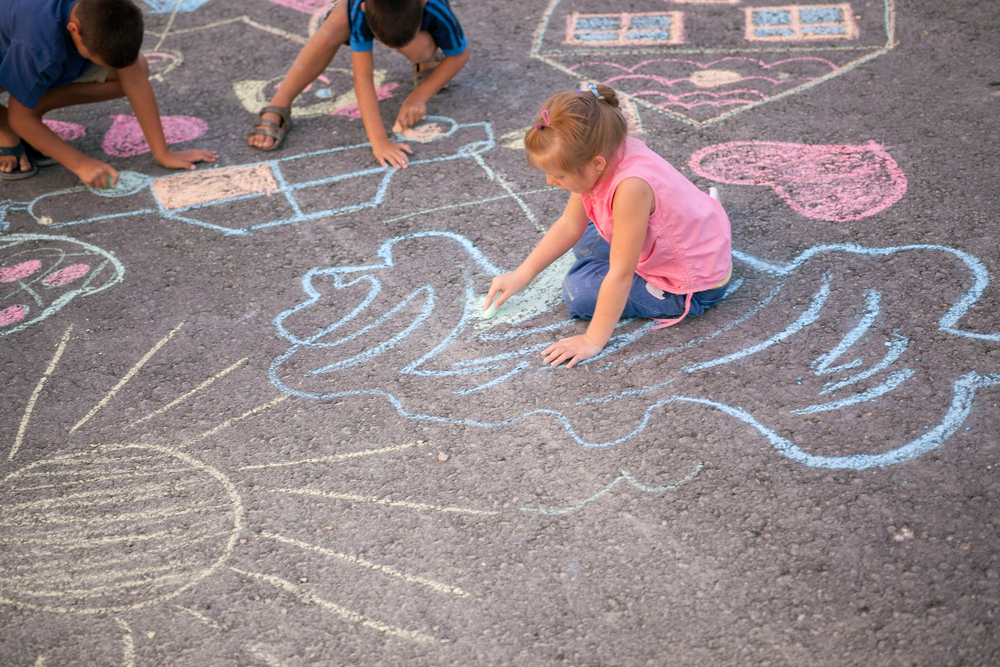
What You’ll Need:
- Chalk (different colors)
- Space to draw the obstacle course on
What To Do:
The best part about this activity is that you don’t need to be Picasso or the most creative person on earth to do it.
All you need to do is grab some chalk and help your child create patterns and designs. These can include loops, zig-zags, lines to jump over, spirals, a maze…if you can imagine it, you can draw it!
Create a beginning and ending spot, and have your child get from one design to the next, following the drawn-on course.
Depending on the space you have available, you can make this obstacle course as small or big as you want it to be.
7) Recycled Robots
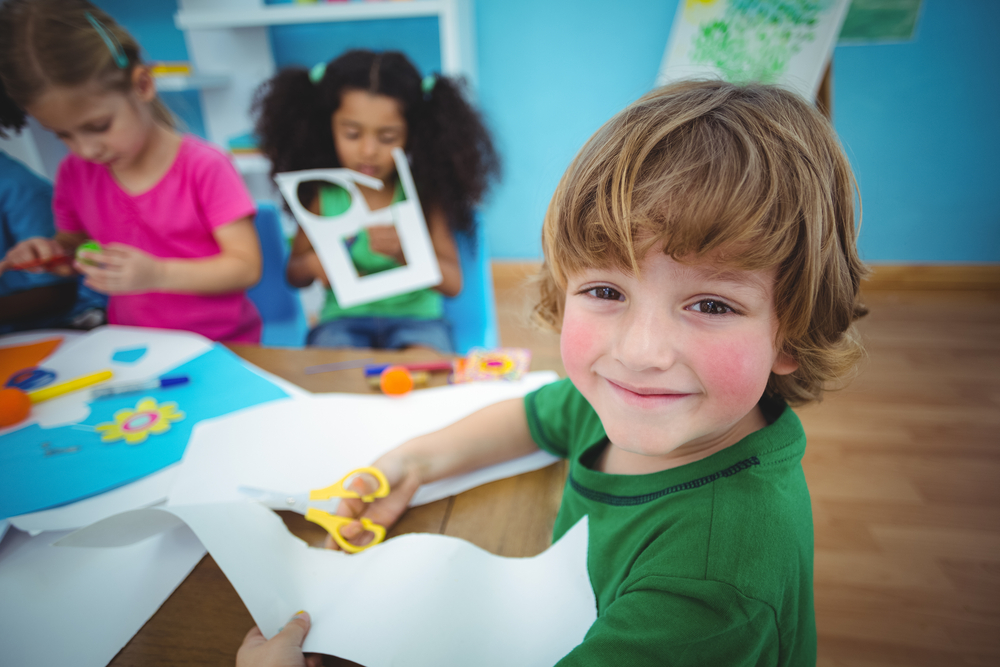
What You’ll Need:
- Any recyclable materials available (cardboard boxes, paper towel rolls, buttons, straws, etc.)
- Scissors
- Glue
- Tape
What To Do:
Before cutting or gluing pieces together, it’s important to know what body part each item will represent.
Start by helping your child find a box that will serve as the robot’s body (this could be an empty cereal box). For the head, find any smaller box available.
Next, collect your paper towel tubes. These will be used for the arms and legs. Then, choose small items (buttons, straws, wool, etc.) to use for the mouth, eyes, nose, and decorations. There is no right or wrong way here!
After you’re clear on what items represent which body parts, it’s time to piece it all together using tape and glue. Encourage your child to decorate the robot as they please. Does it have a super long neck? How about a square nose? Let their imagination run wild.
After piecing items together, give the glue some time to dry. Finally, there’s a robot in the house!
Once you’ve made your robot, check out the HOMER Learn & Grow App, where you’ll find lots of robot stories your new friend can act out.
Fine motor skills, creativity, and imagination are just some of the skills this activity will help develop.
Fun With Creative Activities For Kids

If you have kids, you know how challenging it can be to keep them entertained while at home. If this is something you’ve been struggling with, we hope our list of creative activities for kids has inspired you.
As you can see, there are plenty of ways to help keep your child engaged and learning. From arts and crafts that help develop fine motor skills and creativity to outdoor activities that minimize screen time.
Whether you choose some or all of the activities, having bored children at home will now be a thing of the past!
Check out the HOMER Blog for more exciting activities to help your child continue learning and growing.
,


